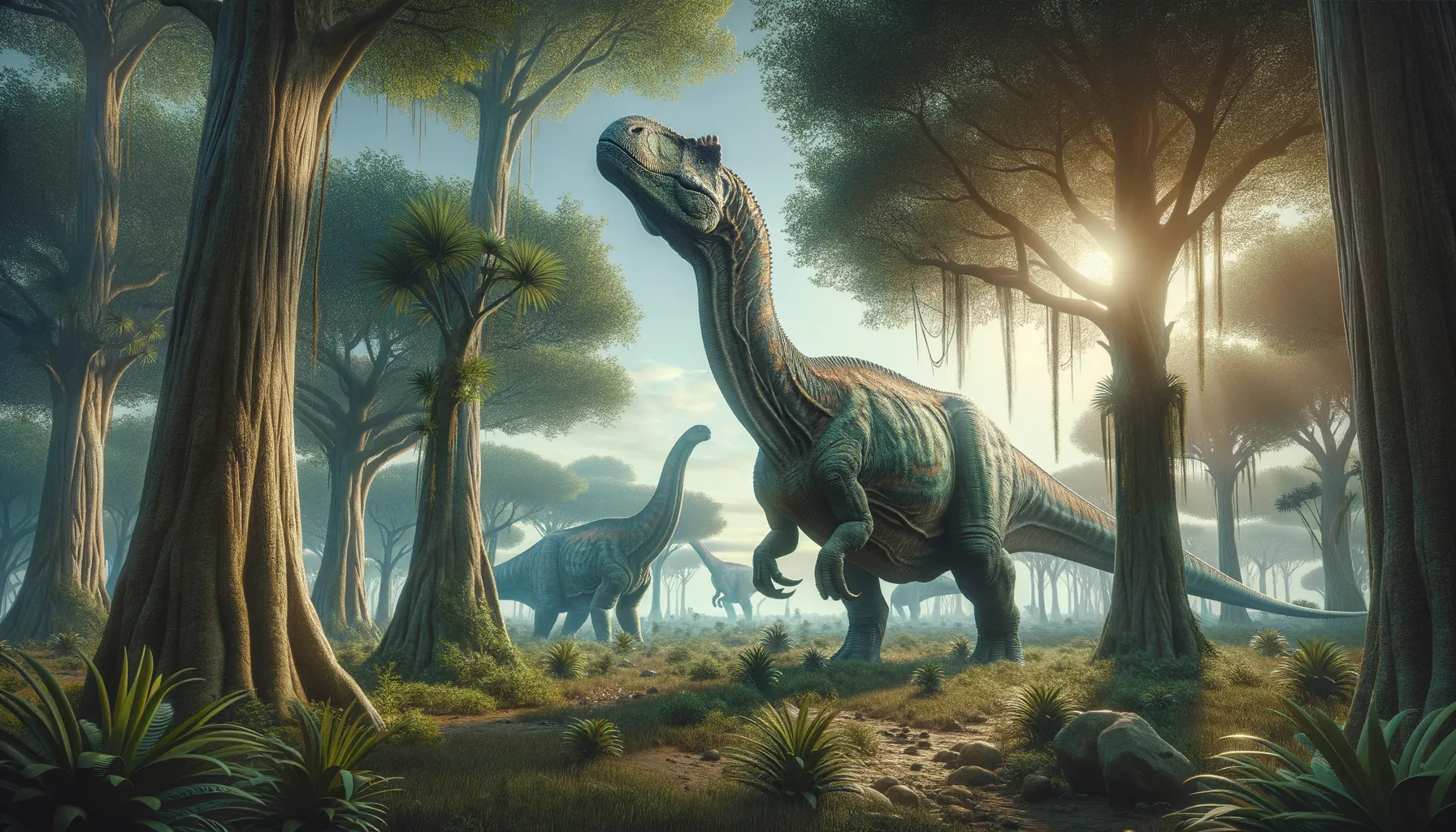
Pakisaurus
The gentle giant from ancient lands.
Period
Cretaceous
Length
Measured up to 15 meters long.
Height
Stood about 5 meters tall.
Weight
Estimated to weigh around 10 tons.
Pakisaurus was a large sauropod dinosaur that roamed the earth during the late Cretaceous period. Known primarily from bone fragments found in Pakistan, it represents one of the colossal plant-eating giants of its time. Despite its immense size, Pakisaurus was likely a gentle giant, using its long neck to reach high into trees. It provides crucial insight into the diversity of sauropods in the ancient ecosystems of the Indian subcontinent.
Diet
Pakisaurus was herbivorous, feeding on a variety of plant life. It likely consumed leaves, stems, and possibly fruits from the upper canopies using its long neck to reach vegetation inaccessible to smaller herbivores.
Hunting
Being a herbivore, Pakisaurus did not hunt for prey. Instead, it would have focused on finding ample foliage to sustain its massive size, moving slowly from area to area in search of food.
Environmental challenges
Pakisaurus faced environmental challenges such as seasonal changes impacting food availability. Droughts could have been particularly challenging, forcing it to migrate to find water sources. As a large animal, it also had to navigate through dense forests, which might have been a challenge given its size.
Speed
Relatively slow due to its massive size.
Lifespan
Estimated to have lived for several decades.
First discovery
Discovered in Balochistan, Pakistan in 2006.
Fun Facts
- Pakisaurus is a dinosaur that lived during the late Cretaceous period.
- Its name means 'Pakistan lizard', highlighting its discovery in what is now Pakistan.
- Pakisaurus belonged to a group called titanosaurs, which were known for their large size.
- Unlike some other dinosaurs, Pakisaurus was herbivorous, meaning it only ate plants.
- Fossils of Pakisaurus were found in the Sulaiman Basin, giving clues about its habitat.
- The discovery of Pakisaurus helps scientists understand the diversity of dinosaurs in ancient Asia.
Growth and Development
Like many sauropods, Pakisaurus likely experienced rapid growth after hatching. It’s believed that these dinosaurs grew to a significant size early in life to avoid predation. The growth rates would have slowed as Pakisaurus reached maturity, sustaining itself on the lush vegetation of its environment.
Habitat
Pakisaurus inhabited the lush floodplains and forested areas of what is now modern-day Pakistan. This region provided abundant plant life necessary to support its herbivorous diet. The environment would have consisted of rivers and wetlands, creating a suitable ecosystem for a large number of dinosaurs.
Interaction with other species
Pakisaurus likely shared its habitat with other large herbivores and smaller dinosaurs. It might have lived in herds, either with members of its own species or in mixed-species groups for safety against predators. Its large size would have deterred most carnivorous dinosaurs from attacking it.
Natural lifespan
The natural lifespan of Pakisaurus could have reached up to 70 years.
Reproduction
Pakisaurus laid eggs, likely in nests constructed in sandy or soft, muddy areas. The young would have required some degree of parental protection or lived within a herd for safety. Growth rates suggest that offspring reached significant sizes relatively quickly.
Social behaviour
Pakisaurus may have lived in herds, which were beneficial for protection against predators. Herd behavior would have also facilitated migration in search of food and water. Social structures could have been quite basic, focusing mainly on the survival and protection of younger individuals.
Fossil locations
Fossils of Pakisaurus have been primarily located in the Shadi Kor Formation in Balochistan, Pakistan. These locations provide critical evidence of the diversity of sauropods on the Asian continent during the late Cretaceous period. The discovery adds to our understanding of continental dinosaur distribution patterns.
